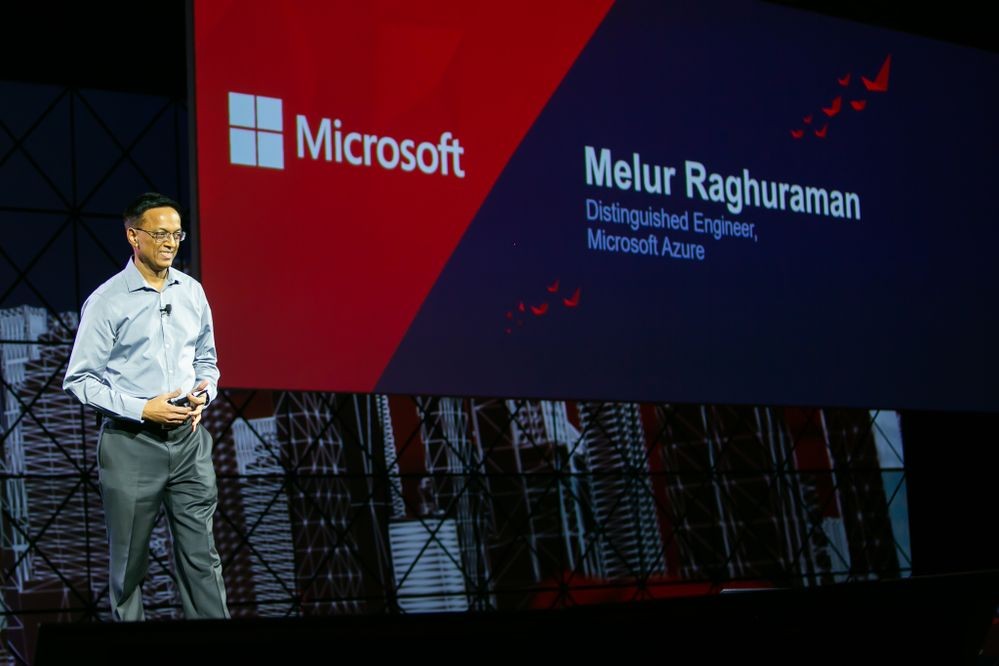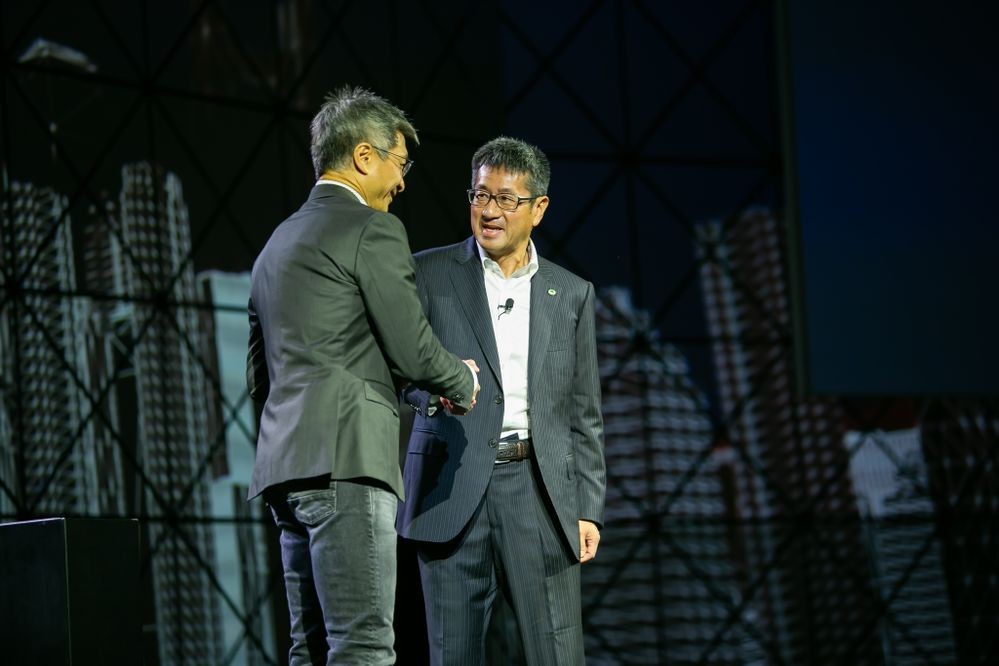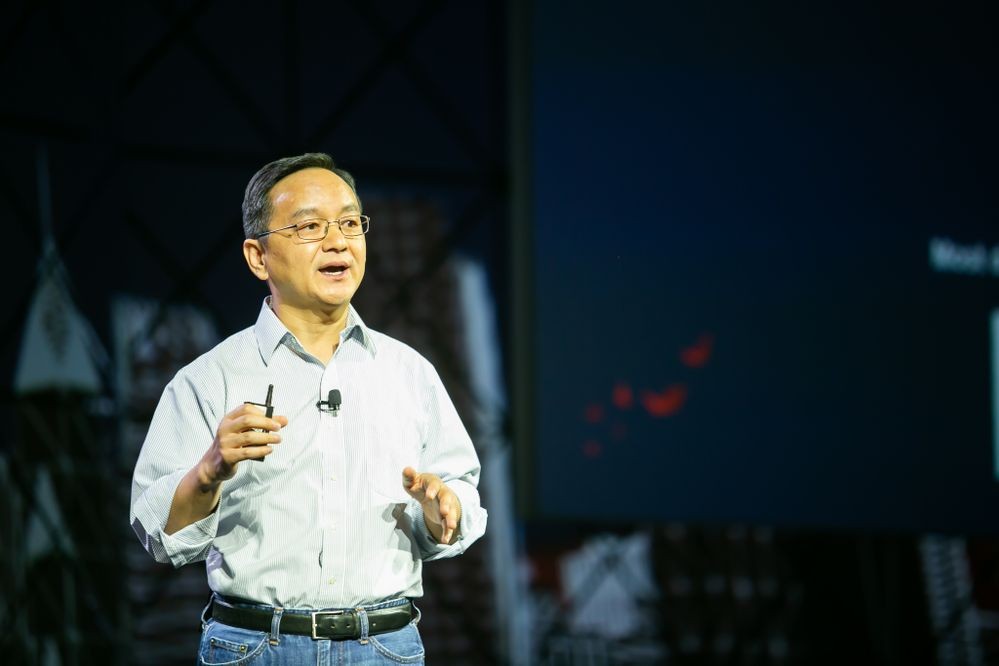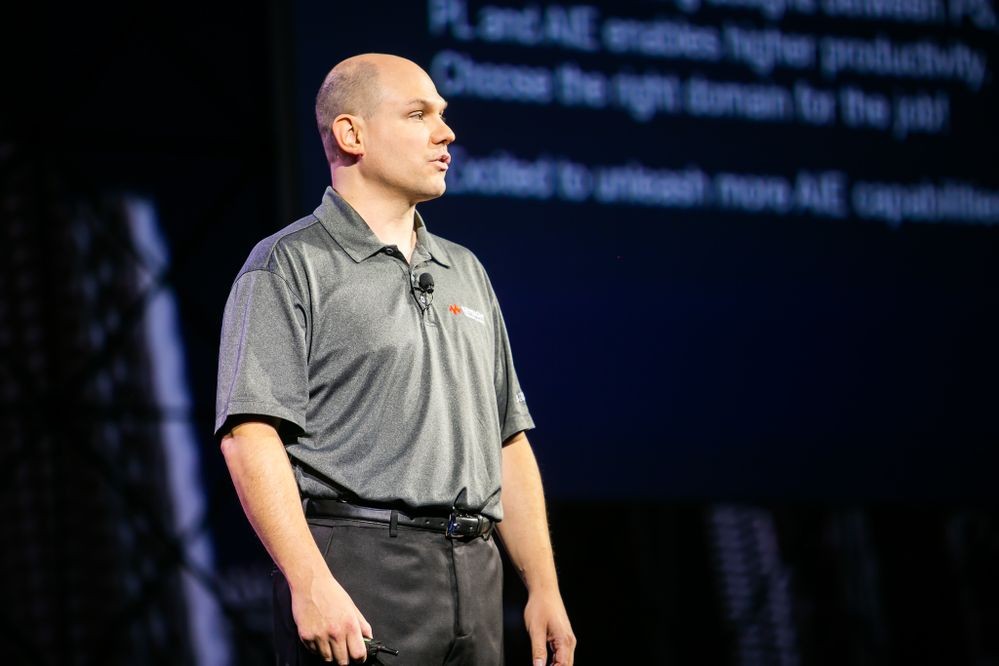Live! XDF Xclusive News
10-01-2019 09:09 AM
Victor’s keynote kickoff
Our 3rd annual Xilinx Developer Forum (XDF) 2019 kicked off today with our CEO Victor Peng’s opening keynote, addressing the more than 1,300 customers, partners, developers, media and Xilinx employees in attendance.
Victor set the stage for XDF 2019 highlighting a few “otherworldly” achievements by innovators that were made possible by Xilinx platforms, including landing an autonomous rover on Mars and bringing back evidence of water on an asteroid 1.2 billion miles away.
Back here on Earth, Victor thanked the many innovators that have built a wide range of applications with Xilinx products, improving our daily lives and pushing the boundaries in areas such as medicine and life sciences, consumer and industrial applications, and high-speed enterprise communications, among others.

And then, in one giant leap for the industry, Victor announced Vitis, a unified software platform that will transform technology innovation. The Vitis unified software platform enables a broad range of developers — including software engineers and AI scientists — to take advantage of the power and adaptability of Xilinx technology in a new and highly efficient way.
Vitis is a major milestone for our platform transformation. Five years in the making and the work of some 800 software engineers, the Vitis unified software platform automatically tailors hardware architecture to the software or algorithmic code, without the need for hardware expertise. Vitis plugs into common software developer tools and utilizes a rich set of optimized libraries, enabling developers to focus on their algorithms and not the hardware underneath.
Victor announced that Vitis will be available to developers for free and general availability will be next month. Vitis is currently shipping to select customers as part of the early-access program for Xilinx Versal series devices. Full details on the Vitis unified software platform, including the press release, are available at the XDF online press kit: https://www.xilinx.com/news/media-kits/xdf-2019.html#vitis
We’re also supporting the developer community with a new site — developer.xilinx.com — that went live today, connecting developers to Vitis experts and providing access to a host of resources.
Throughout Victor’s keynote, he was joined on stage by executives at industry leaders: Samsung, AWS, Microsoft, Hitachi, and Pony.ai, to discuss their business and technology collaborations with Xilinx in their respective markets. Executives from IBM, Micron and Keysight Labs will also be taking the stage. Stay tuned for these XDF Xclusive News updates.
Samsung and Xilinx drive global 5G adoption
As 5G services rapidly take shape, our long-time partner Samsung has been pivotal in driving adoption with its next-generation wireless solutions. As a linchpin for many revolutionary technologies to move forward, we were especially excited to have Wonil Roh, VP of product strategy, Samsung Networks, join Victor on the stage to share the latest on how their work with Xilinx is bringing 5G to new markets faster.

Centered on its Massive Multiple-input, Multiple-output (mMIMO) and millimeter wave (mmWave) solutions for 5G, using the Xilinx UltraScale+ platform, Samsung has seen massive progress with real-world deployments. In April, we were proud to be part of a joint announcement on our collaboration with Samsung on the world’s first 5G New Radio (NR) commercial deployment in South Korea. Since then, the country’s 5G services have grown to support over 3.4 million subscribers, with 93 percent of the South Korea’s population expected to have coverage by the end of the year. A leading market for adoption, Samsung takes the largest share of Korea’s 5G network solutions, providing 5G radio access networking (RAN) solutions on the field and Cloud Native 5G Core solutions for the country’s three leading operators. To date, successful 5G installs have begun in the U.S. as well, with both mobile commercial and fixed service commercial deployments, and Wonil expects Japan to start seeing 5G mobile commercial deployments in early 2020 and India moving forward on 5G spectrum auctions heading into the next year.
Wonil referenced Xilinx’s state-of-the-art devices with minimal power consumption, significant memory size and low thermal output as enabling Samsung’s development of best-in-class 5G products with light, compact form-factors and low power consumption that are ideal for easy deployments.
Next up, Samsung is already planning applications for Xilinx’s forthcoming Versal adaptable compute acceleration platform (ACAP) products.
Amazon and Xilinx accelerate performance from the cloud to the edge
Over the past couple of years, we’ve announced that Amazon was using Xilinx technologies to increase scalability and efficiencies to serve live content to millions of global viewers on Twitch (XDF 2018) as well as enable its AWS F1 FPGA-as-a-service offering. At XDF 2019, the company had even more exciting news and updates to share as Gadi Hutt, senior director of business development and product at Amazon/Annapurna Labs, and Vin Sharma, head of engineering for Amazon Sagemaker Neo and AWS AI, took to the stage.

Gadi announced to the XDF audience that AWS would be expanding its Virtex UltraScale+ FPGA-based F1 service to its Canada region. As the largest provider of cloud storage and compute solutions, increasing availability across AWS Cloud’s massive geographic reach means that it’s becoming easier than ever for FPGA app developers to launch their products around the globe in minutes and at scale.
Some of the world’s most notable companies are taking advantage of F1 to power compute-intensive applications. Gadi mentioned that leading enterprise network security provider Trend Micro, for example, just launched a high- performance version of its network security virtual appliance on the AWS marketplace running on an FPGA instance, enabling AWS customers to expand their on-premises network monitoring and security to the AWS cloud. He also spotlighted biopharmaceutical company AstraZeneca as using F1 to accelerate its research, having built possibly the fastest and most operationally efficient genomic sequence data processing pipeline in the industry! Its pipeline has processed more than 100,000 genomes in 100 hours and is expected to run even faster with new pipeline optimizations. In total, AstraZeneca plans to analyze 2 million genomes by 2026 with the goal of leveraging genomic data to better understand diseases, accelerate the development of new drugs, and more effectively match patients with the best therapies.
Vin followed with exciting news about Amazon SageMaker Neo, which optimizes machine learning models to run up to twice as fast, with less than a tenth of the memory footprint and with no loss in accuracy vs. alternative solutions. SageMaker Neo users will soon be able to take advantage of integrated Xilinx solutions to run their models, on-premise via Xilinx Alveo cards, in the cloud via AWS F1, and at the edge via Xilinx embedded AI deployments. For developers and data scientists, this means having the flexibility to build, train, and deploy machine learning models (TensorFlow, MXNet, PyTorch, ONNX, and XGBoost) anywhere they need them and leverage the power of Xilinx technologies!
Microsoft Collaborates with Xilinx for Azure
GM and Distinguished Engineer in Microsoft Azure’s Compute Division, Melur Raghuraman, joined us onstage to announce our ongoing collaboration with Azure.

Hitachi drives innovation with Xilinx for leading automakers
Hitachi is a Tier-1 provider of advanced driver-assistance systems (ADAS) for many leading carmakers, including Toyota, Honda, Nissan and Subaru, and is driving forward advancements in autonomous vehicles. A close, long-time partner of Hitachi’s, we were extremely pleased to have Hiroki Uchiyama, VP, Hitachi Automotive Systems Americas, join Victor on the stage to share how Hitachi customers have benefitted from the capabilities for Xilinx FPGAs and SoCs, and how his team is now working to leverage our newest solutions to pilot tomorrow’s vehicles.

Hiroki gave the audience a look into Hitachi’s new front-camera system used in a Level 2 ADAS, incorporating SDI capture, ISP, ML (SSD), post-processing and HDMI output. It enables safe, autonomous vehicle performance through rapid, adaptable high-bandwidth processing that reacts to environments in real-time.
As an early access customer, Hitachi has been working with Versal boards and the Xilinx Vitis platform and has seen amazing results. Leveraging Versal’s programmable, adaptable and intelligent capabilities and our new software developer-friendly environment, Hiroki’s team successfully created an end-to-end automotive design using deep learning-based object detection in just two months! For XDF attendees, demonstration of Hitachi’s solution leveraging Vitis and Versal will be available at the show.
Pony.ai chooses Xilinx adaptable, intelligent devices to win the Autonomous Driving Triple Crown: improved accuracy, reduced latency and more engagements per mile
Next, Victor invited James Peng, CEO of Pony.ai, to join him on stage to share how Xilinx FPGAs and Versal ACAP are powering its Level 4 autonomous driving systems, PonyPilot. Together, the collaboration is enabling autonomous drive technology to gallop at high speeds into reality!

From perception to HD mapping to data management, PonyPilot is delivering powerful tech to make self-driving vehicles safer and more reactive than human drivers. A full-stack solution for autonomous vehicles, PonyPilot systems are already being used by Toyota for robotaxis operating in Fremont, CA, and Guangzhou, China.
Xilinx FPGAs—and soon Xilinx Versal devices—are dramatically increasing the accuracy of the PonyPilot sensor-fusion system. James showed video of complex, real-world driving scenarios in both China and Fremont, CA. Requirements in these conditions include strict computation latency, automotive-grade devices, high performance and power efficiency, and customization (adaptability for different tasks)—all while meeting strict requirements for functional safety and validation.
Prior to integrating Xilinx FPGAs, the sensor-fusion system output discrepancy measured nearly ½ a car length. With Xilinx technology, the Pony.ai team achieved zero discrepancy in sensor-fusion output for real-time reactions on the road. Eliminating these performance bottlenecks removes dangerous lags for autonomous vehicles so they can respond to environmental hazards, other vehicles or any surprises on the road with greater immediacy that helps avoid accidents and save lives.
IBM integrates Xilinx FPGAs into IBM PowerAI Vision software
Following a deep dive on the new Vitis unified software platform by Xilinx’s Salil Raje, EVP & GM, Data Center Group, he was joined on stage by Sumit Gupta, VP of product, AI, ML and HPC at IBM. Sumit shared how IBM is integrating Xilinx FPGAs into the IBM PowerAI Vision software to build accurate models using images and videos without deep learning expertise. IBM also working with Xilinx to integrate IBM AI Vision software with the new Vitis AI software to build and model on an FPGA seamlessly with Vitis software.

Micron and Xilinx will drive acceleration for hyperscalers
Micron Technology’s Tom Eby, SVP & GM, compute & networking, next took the stage to share how the company is using the new Vitis development platform alongside Xilinx’s flexible FPGA and ACAP technologies to let hyperscalers adopt and deploy new features in the data center much faster.

Tom shared that the growth of hyperscaler customers has led to closed datacenters where new hardware often adds features well before specs are set in standards bodies to deliver their real value. The power and ease of use that Vitis provides for developers, however, means they’ll finally be able to unlock new features and keep pace with growing demands from these customers. With Vitis, Micron finds that adding support for a new feature can now happen in just 6 months from a draft spec being released rather than the 2-3 years that industry is used to!
Tom further discussed how AI applications especially are driving demand for more inference everywhere through heterogeneous architecture and broad memory portfolios tightly coupled with compute for greater performance and efficiencies—and adaptability to meet requirements for varying workloads. And he sees Xilinx ACAP architecture providing the flexibility to enable it all.
Looking to designers, Tom explained the value he saw for the Vitis platform. For these users, he found the new platform especially empowering by enabling them to streamline processes with easy-to-migrate designs, have the flexibility to produce complex heterogeneous designs, and be able to leverage a comprehensive acceleration library with a user-friendly frontend GUI and integrated tools —all unlocking the full power and resources of Xilinx FPGAs and the new Versal family of ACAPs.
Keysight Leveraging Versal to Accelerate Test & Measurement for 5G
Next Liam Madden, EVP & GM, Wired and Wireless Group at Xilinx, took the stage to discuss Xilinx’s disruptive technology in 5G. He was joined on stage by Nathan Jachimiec, principal embedded systems architect at Keysight Labs, a leader in applied research for test and measurements impacting emerging technologies.

For its 5G test equipment, reducing latency has been critical to minimize the time between triggers and measurements. Keysight’s customers have been asking how to customize their instruments, creating a new demand for rapid prototyping. With AI engines, Keysight has found that it can realize this while delivering best-in-class results, moving compute intensive functions to the AI engines in just minutes versus hours, all while staying within the necessary power budget.
Nathan said he believes this is a truly disruptive technology and looks forward to leveraging Versal to bring more compute-intensive operations closer to their world-class data converters, opening the door for a richer customer experience and realization of rapid prototyping.